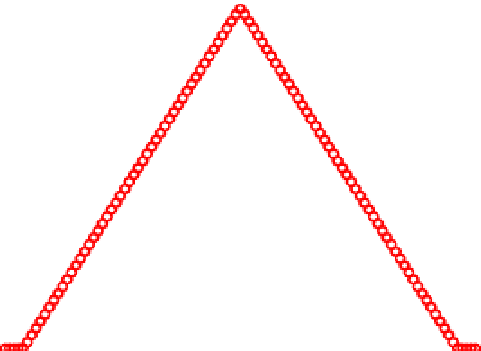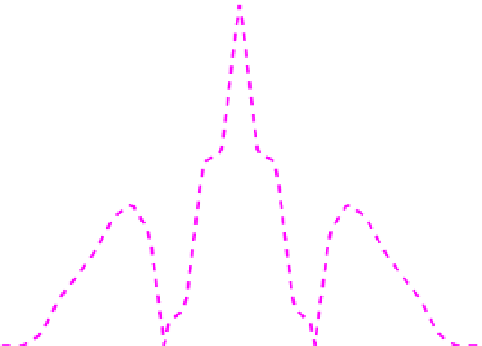Global Positioning System Reference
In-Depth Information
•
Front-end filter bandwidth (i.e., precorrelation bandwidth),
•
Correlator spacing used in the code tracking,
•
Type of discriminator used to run the DLL (i.e., nEML, HRC, etc.),
•
Code chipping rate,
•
Number of multipath signals,
•
Amplitudes, delays and phases of multipath signals with respect to the LOS signal, etc.
The type of signal modulation basically determines the shape of the correlation function.
For example, BPSK is used to modulate GPS L1 C/A signal, which has a single significant
tracking peak within
±
1 chip delay from the correct code delay, whereas CBOC modulations
(i.e. CBOC(+) for data channel and CBOC(-) for pilot channel) are used to modulate Galileo
E1 signal, each of which has more than one significant tracking peak within
1 chip delay
from the correct code delay. Non-coherent (i.e., absolute value of the correlation function)
correlation functions for the above modulations are shown in Fig. 2, where the extra peaks
±
Correlation shapes for different signal modulations
1
BPSK
CBOC(+)
CBOC(−)
0.8
0.6
0.4
0.2
0
−1
−0.5
0
0.5
1
Code Delay [chips]
Fig. 2. Non-coherent correlation functions for different signal modulations.
can be clearly observed in case of CBOC modulations. This is the situation in the most ideal
single path scenario. The situation would get far worse in the presence of multipath signals,
for example, in a typical fading channel model with a two to four path assumption. Fig. 3
shows the distorted correlation shapes of different signal modulations in a two path static
channel with path delays [0 0.1] chips and with path powers [0 -6] dB. As seen in Fig 3, the
presence of an additional peak (in case of CBOC(+) and CBOC(-)) due to multipath imposes a
challenge for the signal acquisition and tracking techniques to lock to the correct peak. If the
receiver fails to lock to the correct peak, a multipath error in the order of few tens of meters is
of no surprise.
The front-end filter bandwidth used for band-limiting the received signal also has some
impact on the correlation shape. The bandwidth, if not chosen sufficiently high, may round
off the correlation peak as well as flatten the width of the correlation function, as shown in
Fig. 4. For this particular reason, the choice of correlator spacing depends on the receiver's
available front-end bandwidth (and off course, on the sampling frequency), that follows the






























































































































Search WWH ::

Custom Search